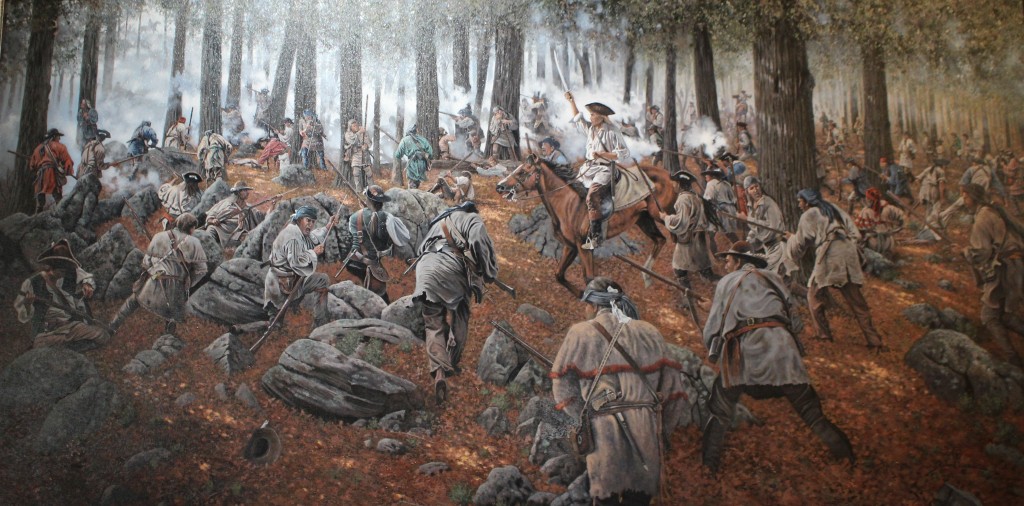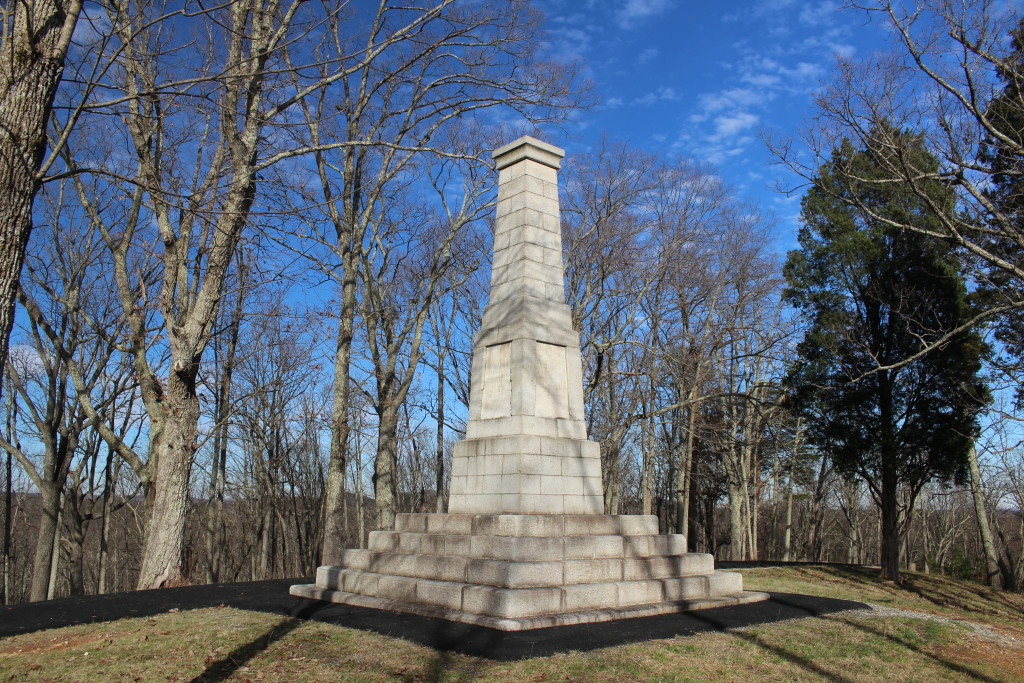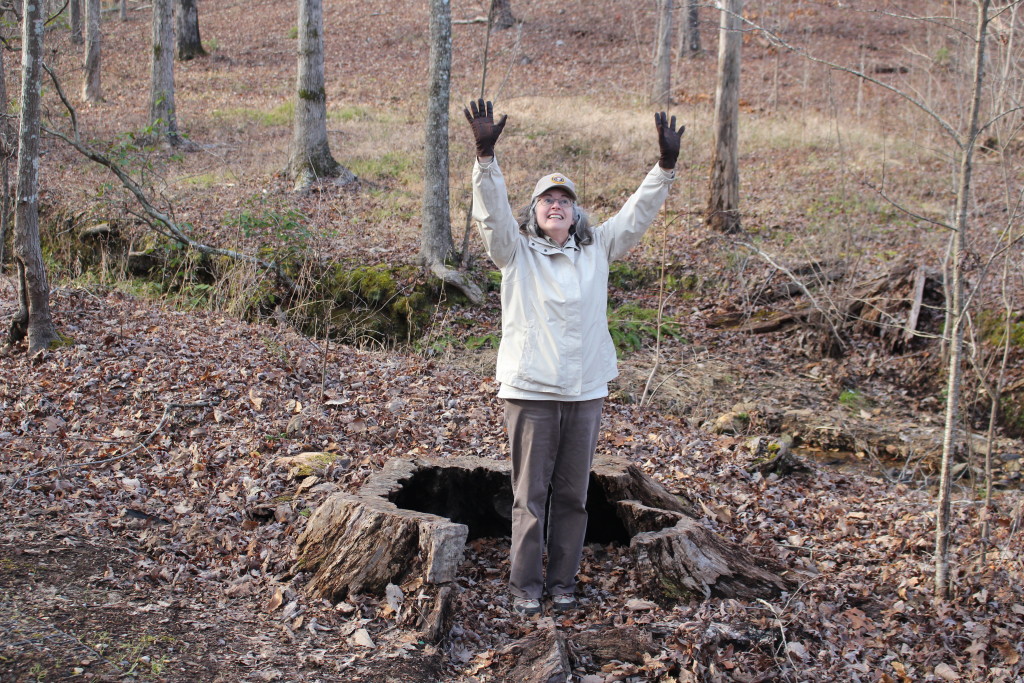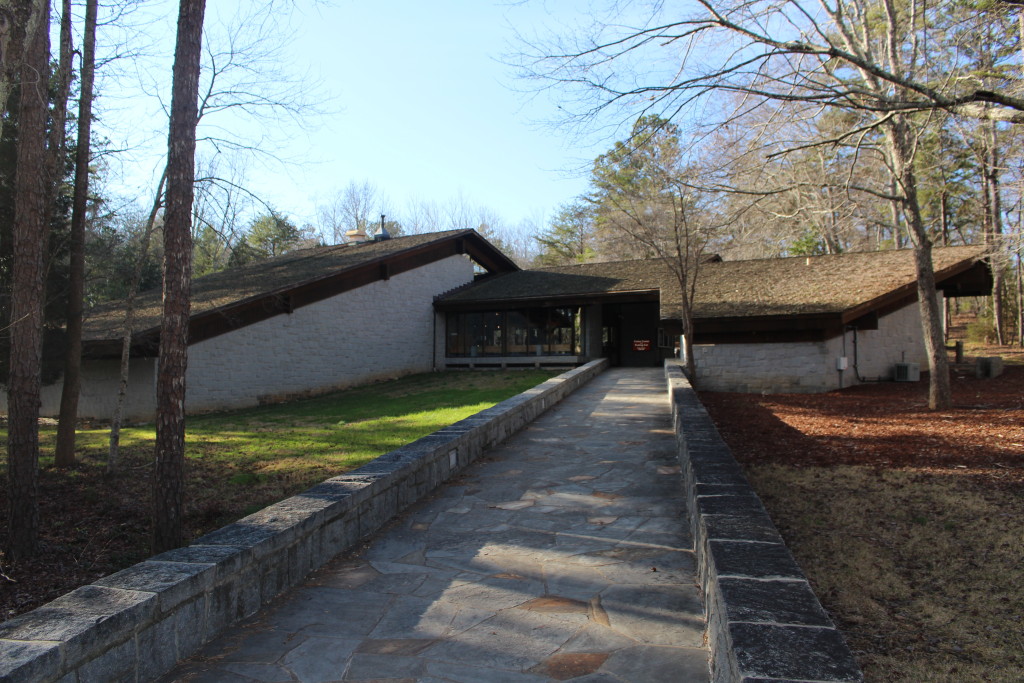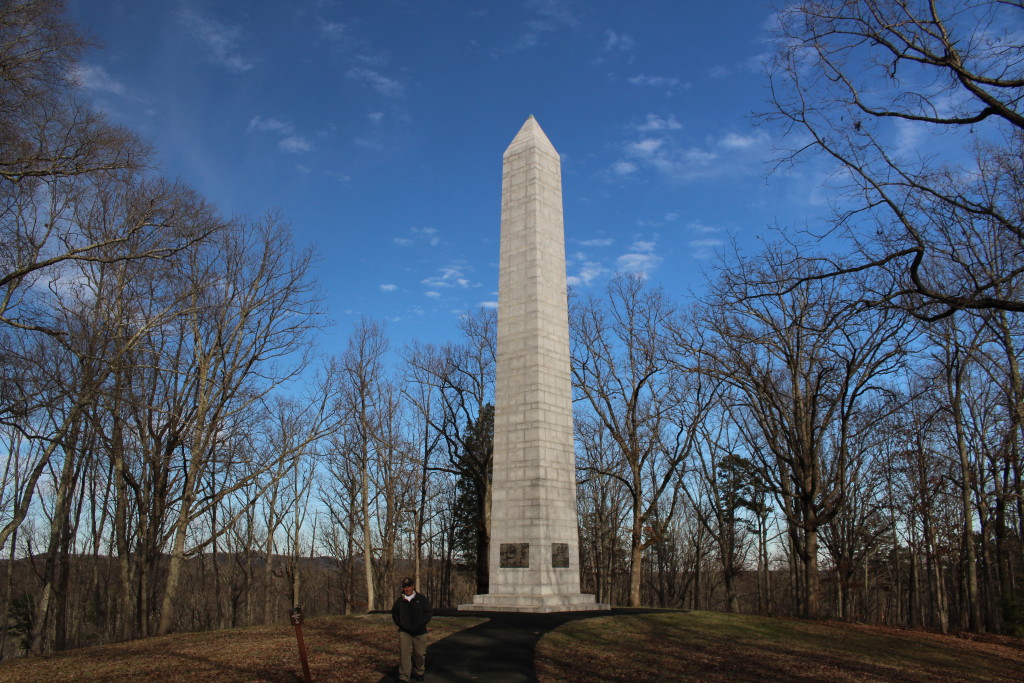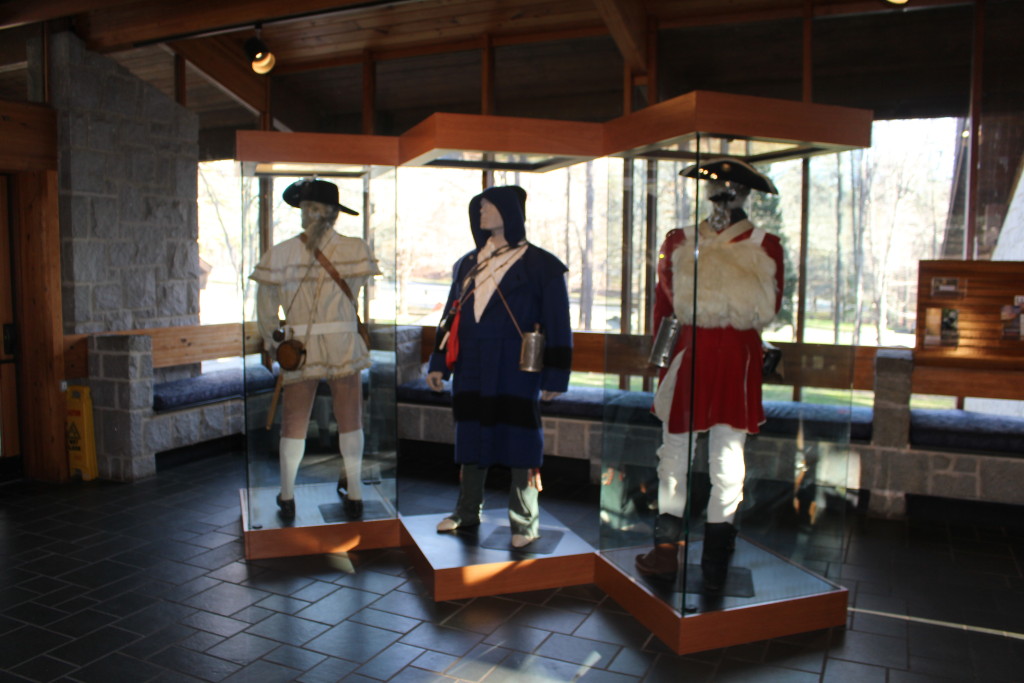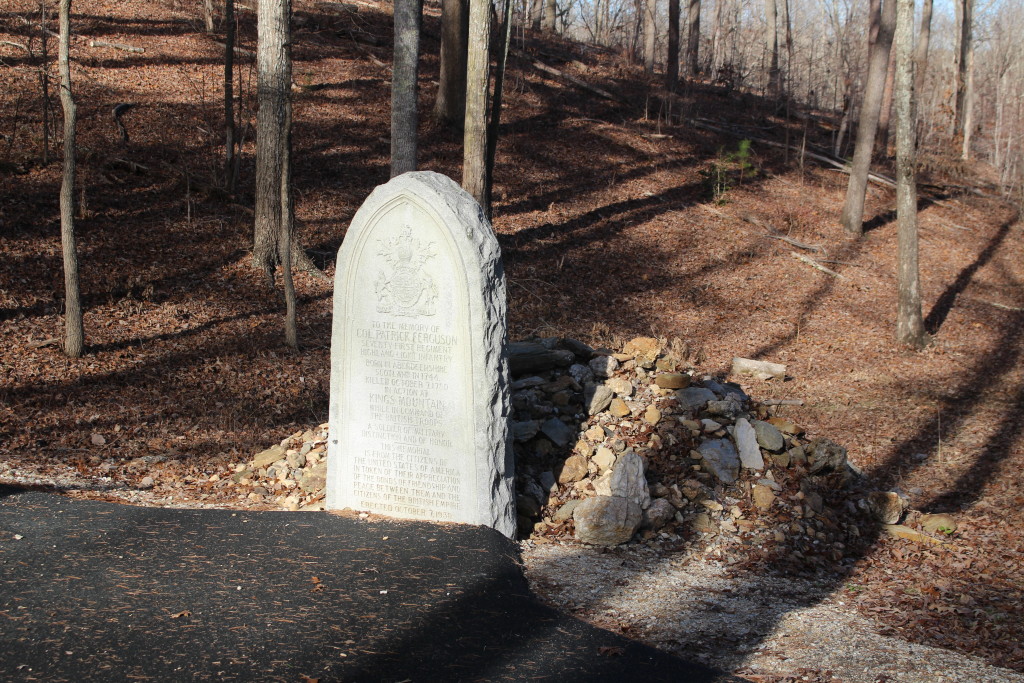This week we move on to a Revolutionary War battle that hits Tom and me where we live: the Battle of Kings Mountain. If you read this blog at all, you know that we have now spent almost three months volunteering at Kings Mountain National Military Park. There are only a dozen people that know more about the Battle of Kings Mountain than we do. Which, of course, leads to another problem: how to tell you about it and keep it to nutshell size?
The Patriots were losing the war. While the Patriot militia in the Carolinas was having some success, the Continental army had lost battle after battle. The Loyalist militia held Savannah, Charleston, New York, every sizable port city except Boston. If Cornwallis could push through North Carolina and invade Virginia, the war would be over soon, with the Colonies remaining in British hands.
But General Cornwallis was having problems getting through the Carolinas. Every time he thought he was making progress, his supply wagons would be captured or small portions of his army would be defeated by the guerrilla fighting of the Patriot militia. The defeat of the Patriot army at Camden had been devastating and demoralizing, but the Patriots would not concede that they were beaten. Cornwallis decided to divide his superior army into three branches, hoping to subdue the Patriots in the Carolinas once and for all.
Banastre Tarleton took the eastern branch and was brilliant and brutal. Major Patrick Ferguson was given a small group of Royal Provincial soldiers and told to recruit Loyalist militia to the cause in the western branch. Ferguson recruited brilliantly and soon had almost 4,000 Loyalist militia to augment the 200 red-coated Provincial soldiers. Ferguson trained them patiently and by September, 1780, he had about 1,000 militia marching with him. The problem with militia was they were always going home, and Ferguson rarely had more than 1/4 of the militia with him. They came and went as they pleased and Ferguson was not able to control them in this.
In an effort to discourage attacks in this western part of the Carolinas, Ferguson sent a message to the leaders of the Overmountain Men who lived west of the Appalachian mountains. Remember, these men had largely stayed out of the war. So Ferguson hoped to discourage them further. The message said, in part, that if the Overmountain Men took up arms against the King, Ferguson would “march his army over the mountains, hang their leaders, and lay their country waste with fire and with sword.”
It was the wrong message to send to a group of stubborn Scots-Irish who were only interested in defending their homes on the frontier. The Overmountain leaders, Isaac Shelby and John Sevier, took this threat seriously. They sent word through the mountains that they were heading east to fight Patrick Ferguson. Ferguson had made an impersonal war into a personal challenge by threatening the homes of the Overmountain Men.
The Overmountain Men met at Sycamore Shoals on September 25, near present day Johnson City, Tennessee. Almost 1,000 of them gathered, and after a fiery sermon, they set out to find Patrick Ferguson. They traveled over the mountains on their horses through an early fall snow,. It was a difficult journey, but these men were accustomed to hardship. They had defeated Cherokee, could Patrick Ferguson and his army be more difficult? They carried their hunting long rifles: although slow to load, these rifles were very accurate even at long distances.
Along the way, the Overmountain Men were joined by militia groups and others who decided to come fight on the spur of the moment. Eventually there was a loose army of over 2,000 men hunting for Patrick Ferguson. After several false turns and some bad information, the men heard that Patrick Ferguson had stopped his army at a place called Little Kings Mountain. Because the Overmountain Men were still some distance away, they decided to ride fast and hard to catch Ferguson. They divided their band into two groups – the first group would swiftly pursue Ferguson. The second group, tired after the 300 mile journey, was not able to move as quickly and would join the Patriot forces as soon as they were able.
About 3 p.m. on October 7, 1,000 Patriot Overmountain Men and militia surrounded Little Kings Mountain. More a knob than a mountain, Patrick Ferguson had camped his army of militia and Royal Provincials on the cleared top of the the hill. When given the signal, the Patriots rushed up the hill, hiding behind trees that were 3 to 5 feet in diameter and grew on the sides of the hill. Although both sides had about the same number of men, the muskets used by the Loyalist forces were inaccurate and, because they were firing downhill, most of their shots went over the heads of the Patriots. Several bayonet charges were tried by the Loyalists, but the Patriots would just run away, allowing the Patriot forces on the other side of the hill to advance.
Bit by bit the Patriots climbed the hill, shooting with deadly accuracy behind their good cover. The Loyalists were killed and pushed back until they were surrounded and ready to surrender. Patrick Ferguson, however, refused to let his army be defeated by “bandits” and he would not allow them to surrender. When the Patriot forces got close enough, Patrick Ferguson was shot by many of them at the same time, and fell dead from his horse. Finally, Captain Abraham DePeyster was able to surrender the Loyalist forces. The Loyalists had 300 casualties and 800 men were taken prisoner. The Patriots lost less than 100.
The Battle of Kings Mountain was over in an hour. After the battle, the Overmountain Men returned home, having done what they set out to do. But the Battle of Kings Mountain was a turning point for the Revolution. It gave the Patriots much needed hope and showed them that militia and guerrilla fighters could defeat the British led army.

